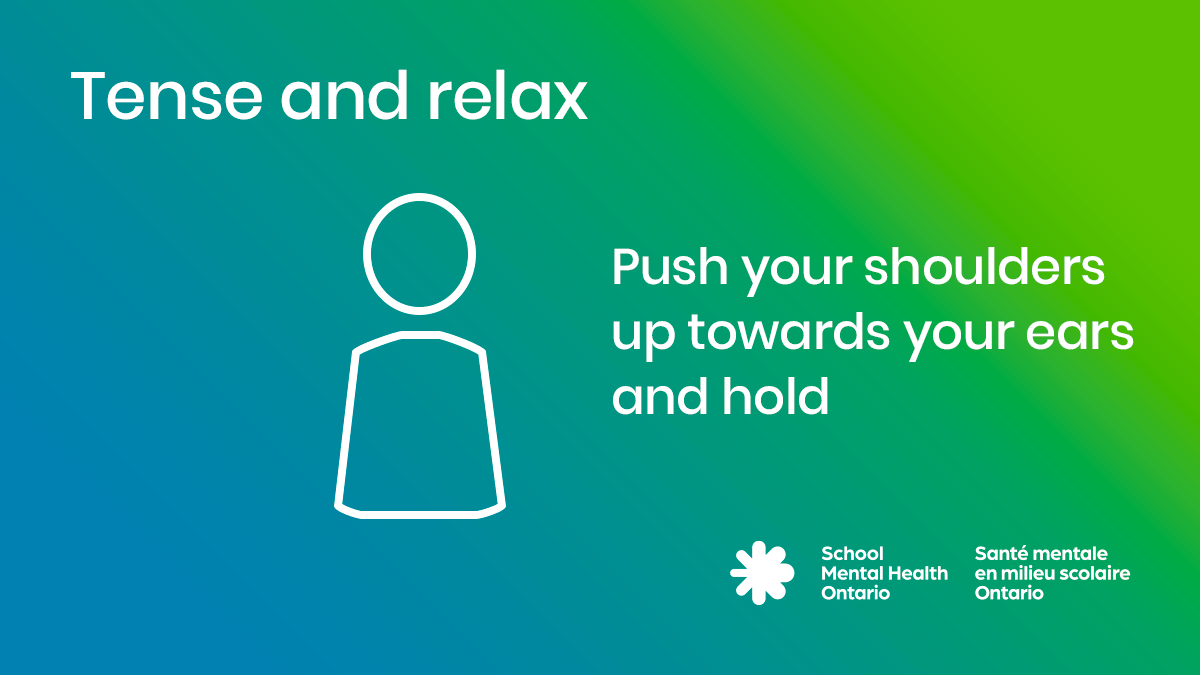


Time
5-10 minutes
Level
Primary / Junior / Intermediate
Material
N/A
Purpose
To help students develop the skills to notice how their body feels when they are tense and relaxed, and to learn how to relieve tensions and to self-regulate
Help students notice how they feel when they tense their muscles and when they relax them. For the practices below, discuss how each area of the body feels before the exercise, then discuss how it feels afterward.
NOTE: if a student feels pain or discomfort, invite them to sit and pay attention to their breath instead.
| Neck/turtle |
|
| Hands/lemon |
|
| Stomach/ fence |
|
| Feet/mud |
|
| Arms/push-pull-drop |
|

Tense and relax:
- Push your shoulders up towards your ears and hold
- Now let your shoulders go and relax
- Notice how it feels when your muscles are contracted vs. relaxed
- Let’s try again
See our social-emotional learning poster series for a tense and relax classroom poster.
- Once this is an established practice in your classroom, you may choose to have students lead the activity.
- You can add more body parts as students learn to isolate different areas.
Understanding the difference in how the body feels under tension and in a relaxed state is a helpful tool to identify and regulate emotions. When students have the opportunity to simulate what it feels like to relieve tension, they can become more mindful of their emotions, and learn to effectively self-regulate (Blair & Diamond, 2008; Klingbeil et al., 2017).
Blair, C., & Diamond, A. (2008). Biological processes in prevention and intervention: The promotion of self-regulation as a means of preventing school failure. Development and Psychopathology, 20(3), 899-911. doi:10.1017/S0954579408000436
Klingbeil, D. A., Renshaw, T. L., Willenbrink, J. B., Copek, R. A., Chan, K. T., Haddock, A., . . . Clifton, J. (2017). Mindfulness-based interventions with youth: A comprehensive meta-analysis of group-design studies. Journal of School Psychology, 63(Complete), 77-103. doi:10.1016/j.jsp.2017.03.006
Being in a planning time teacher role where I see multiple classes, this particular activity worked the best, because it was easy to implement in majority of my primary/junior classes. All students enjoyed tensing and relaxing their different body parts.
This was a useful practice to bring down an emotionally charged class environment and allowed for an easier transition to the next lesson.
Each time students were more efficient and better at tensing/relaxing their body parts.
Or, view all practices and use filters to find what you need
